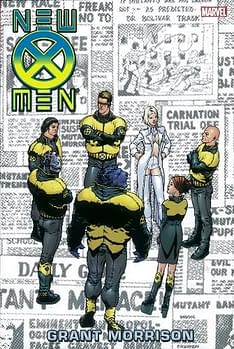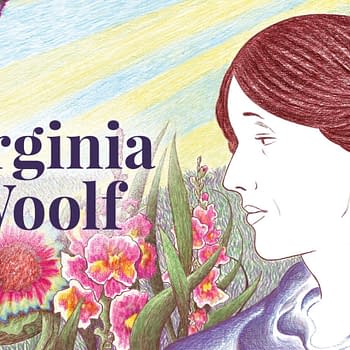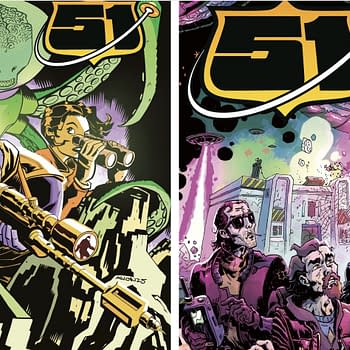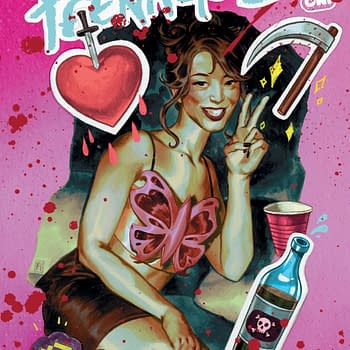Posted in: Comics | Tagged: Comics, grant morrison, green arrow, green lantern, harker
Jack Of All Trades by Dave Wallace: Roger Gibson Talks 'Harker'
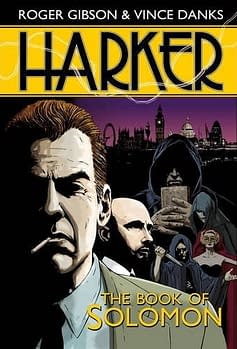
This week, I want to spotlight the success of a UK indie comic that I've been a fan of for quite a while: Harker. The book is a thoroughly British detective thriller/whodunnit comic, and one that manages to pull off the difficult balancing act of providing a compelling 'straight' story whilst at the same time affectionately spoofing many of the genre's conventions.
The reason I'm celebrating it in this column is that its creators have recently succeeded in striking a deal with Titan Books to have the series' first two six-issue arcs reprinted in fancy hardcover editions, as well as being commissioned to produce a brand new third graphic novel to continue the series.
To catch up on all the details, I spoke to Harker writer Roger Gibson.
Dave Wallace: For those BleedingCool readers who might not have heard of Harker, can you give us the basic pitch of what the book is about?
Roger Gibson: Harker is a comic that thinks it's a TV detective show, so the best way to approach Harker: The Book of Solomon [volume one of the series] is to imagine that you're watching it on the telly at maybe 9.25pm on the BBC on a Saturday evening, probably on a cold night with the lights off.
So you can expect to see the same kind of things you'd see in a typical TV detective show: a quirky, obsessive, grumpy copper; a slightly off-kilter assistant; some dastardly, violent murders; an intricate plot filled with twists and turns; some wry humour and a dramatic, thrilling conclusion.
As for the story, it's essentially a dark, gripping murder mystery, peppered with middle-class Satanists, full of plenty of dry wit, and introducing a new detective team to the world.
DW: I detect quite a few influences from TV detectives on the book – the ones that jump out at me are Inspector Morse, Columbo, and maybe even a little Life on Mars in the characterisation and relationship between the two detectives, Harker and Critchley. Which ones have I missed?
RG: You've pretty much nailed it there – Harker has a classic car and a dislike of corpses, which we took from Morse; he has the dress sense and rambling nature of Columbo; and he has the attitude of Gene Hunt from the British version of Life On Mars. We've also incorporated some of the stylistic look of Waking the Dead (most specifically in the dark, spotlit morgue sequences), and there's some Holmes & Watson in the relationship between Harker and his assistant Critchley.
Harker as a character is also about fifty per cent me, along with all of my various failings and foibles. He's a little grumpier than I am, and tends to say things that I never would, but he shares much of my background. He's sort of the detective version of me from an alternate Bizarro-universe.
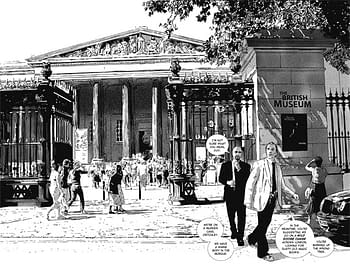
DW: I'm curious: what encouraged you to use crimes involving the occult as the basis for the book's plot? I picked up one or two From Hell references within the book itself, but I'm guessing it goes a little bit beyond that.
RG: There's a touch of From Hell at the beginning, which Critchley references himself, though mostly the plot harkens back to Dennis Wheatley and old, daft Hammer films such as The Devil Rides Out. So it's the occult, but seen from the frame of reference of TV and movies rather than anything especially authentic. We're playing with the archetypes again, bringing you a world that's got a TV reality about it rather than actual reality. It looks real, and we've taken care to use all the real locations, all within half a mile or so of the British Museum, but it's that uber-reality that you see on the TV where underground labyrinths really exist and where it's entirely plausible to smash a car through the very thick front doors of the British Museum.
As for why we went for the occult as the first plot, when we first released it as a comic we were unsure whether typical comic readers would happily embrace a fairly standard TV detective format, so we chose an occult plotline as a way to sneakily draw the readers in, teasing them with a dark, Satanic plot and not letting on that they were actually watching a TV detective show until they were too embroiled in the story to be able to put it down.
Ultimately we probably didn't need to worry, as most of the comments we've had about the book talk enthusiastically about the relationship between Harker and Critchley, or about the wry humour we slipped in, so I think we got away with it. Never underestimate your audience, basically.
But it's certainly a tactic that works – Titan specifically requested a dark, occultish cover, probably for the same reason, and splattered a healthy dose of blood over the back of the book, so they clearly also think that that's what's going to attract new readers. We all like to be at least a little scared, after all.
DW: That's interesting. I like the new cover, but you're right, it's definitely a darker tone than some of the series' original covers.
On the subject of using the the occult stuff to add spice to a 'standard TV detective format', it occurs to me that despite so many different genres being explored by comics today, traditional whodunnits aren't particularly well-served by the medium. Do you have any thoughts on why that is?
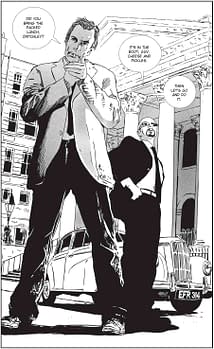
I also think that it's a good way of attracting non-comic readers into the medium. If we can sneak Harker into the crime sections of bookshops, it could open up a whole new area for comics and maybe help to introduce the medium to new readers. It's why we've kept the storytelling and panel design of the books very formal and basic, using the storytelling rules of TV rather than comics, so that anyone can understand and enjoy the book whether or not they have a background in comic reading.
DW: One thing that I love about Harker is the Britishness of it all – we have classic British cars, scenes set in and around London landmarks, half an issue taken up with a simple chat in a pub over a couple of pints, and plenty of little details that will only truly resonate with the British (like the running gag about cheese and pickle sandwiches). Is there a conscious effort to inject that sense of Britishness into the book?
RG: Definitely for this first book, yes. Hopefully there's nothing in there that would be too mystifying to American readers, but this first book is deliberately very British, if only to demonstrate that you don't have to set murder mysteries down darkened, rain-soaked New York alleyways to make them fun. We chose the height of summer in the centre of London as our locale, keeping the story in locations that will be mostly familiar to international readers, so I hope that anyone who has been to London should at least still get the pleasure of recognising certain places and from having been there themselves. So yes, it's a very British book and defiantly so, but one that hopefully appeals just as much to an international audience.
DW: As a fan of the book when it originally came out in singles, I'm happy to say that I thought the second six-issue arc was just as strong as the first. Do you have any plans to release that second story in a collected edition further down the line?
RG: Yes, absolutely. We have a three book deal with Titan, so they're publishing Book Two, Harker: The Woman in Black, as the next in the series, and it's due to come out next year. It's set in Whitby and has much more of an Agatha Christie and Sherlock Holmes feel about it, so there's that distinct change of tone which will be a feature of all future books, skipping from one detective genre to another and playfully fooling around with them.
DW: You mentioned a three-book deal: so what's next for Harker after that? Is there a third arc on the way?
RG: Yep, we're keeping going – Titan have commissioned a brand new Book Three, which Vince [Danks, artist of Harker] and I are starting as we speak. It'll be another 120 page graphic novel, the same size as the first two, and this one is set in New York. It takes in influences from such things as Bullitt, The French Connection, The Rockford Files and The Maltese Falcon, so again we have a distinct change of tone. Harker and Critchley will be the same as ever, but this time they're personally embroiled in a murder plot, trapped between the New York Police and our villain, doing their best to solve the murders before they end up arrested themselves.
It's going to be everything that's great about US cop movies and TV shows, and it includes a ludicrously long car chase, if only to prove that ludicrously long car chases are possible in comics. It'll also be full of the usual dry humour and wit, with Harker very much out of place in the New York environment.
DW: Sounds like fun.
It's interesting to again note all those movie and TV influences you mentioned: as much as I enjoyed the first two Harker stories as comics, it's a series that I could see making an easy transition to other media, too – could you ever envisage taking the series to the world of TV, radio or film?
RG: I'd absolutely love that to happen, yes. I kind of see TV as the natural home for it, if only because we write it as though it were a TV series. So many people have told us that they'd love to see it on the telly, so hopefully we'll be able to find a production company that agrees!
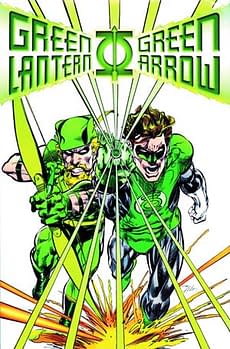
Radio would be terrific too, though film-wise I'm not sure if there's much of a market at the moment for detective movies. But watch this space, basically – if we can get a TV production company interested in the project, I'll jump at the chance.
DW: And finally, do you and Vince have any non-Harker work that you're cooking up together?
RG: Vince and I have been developing a new series called Gravestown, set in a mysterious city inside a house, and we'll be looking for a publisher for that. We're also hoping to pick up some freelance work, and we're putting together a few pitches to see if we can get some interest. We're currently very available, should anyone want to get in touch!
DW: Good luck!
New Release Round-Up:
And now, on to my pick of this week's new releases.
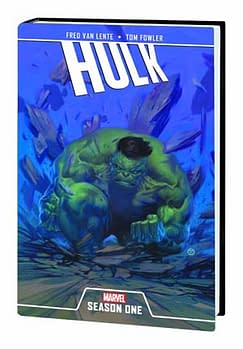
Hulk: Season One HC: I haven't checked out any of these "Season One" Marvel books out yet, as they don't really seem to be aimed at readers like me. Instead, they seem to be self-contained primers on a given character that are aimed at getting new readers up-to-speed on everything you need to know in order to start getting stuck into the regular titles.
Still, despite being one of Marvel's most prominent characters, I'm not sure I see the sense in adopting such an approach to the Hulk. Surely everyone knows the basics, right? I mean, he's not a character with a particularly complicated origin, and it's not as if his continuity is as convoluted as the likes of the X-Men. Nevertheless, it's a notable release this week and it'll be interesting to see whether writer Fred Van Lente and artist Tom Fowler can make the exercise worthwhile.

Reviews:
Time now for a look at a few recent releases.
Superman – Action Comics Vol. 1: Superman and the Men of Steel
Despite having picked up most of the eight issues collected here as they first came out, I actually ended up enjoying them a little more in hardcover form than I did in singles. Part of that is undoubtedly due to DC's decision to collect the issues in a different order to that in which they were released: rather than interrupting the main Grant Morrison and Rags Morales arc with the "origin" issue and the two-part Legion story, these are saved for the end of the HC–as are the backup stories that ran at the back of several of the individual issues. This means that we get the whole main story as originally intended–and as you'd expect, it flows a little better without interruptions.

Lex Luthor and Brainiac are both used fairly well: I like that this Luthor is quite petty (he's far from being the super-powerful businessman and scientist we know in the present day) and his character flaws are quite obvious. And I also really enjoyed the way that Brainiac is played as an obsessive comics collector who wants to 'collect' Superman along with Kandor so that his collection is complete and thus worth more due to its rarity.
Morales' art is really beautiful in places: slickly-rendered, but also very textured and real-feeling. He also handles the Superman-in-jeans-and-T-shirt costume better than any of the other artists here.
Aside from the main Morrison/Morales story, the other issues are reasonably good: the 'origin' issue is nicely done, and the Legion story is a fun (if slightly confusing) mind-bending time-travel yarn – but it still feels as though the book is building up to something bigger. (Possibly involving the mysterious "Little Man" who shows up in several places here–I wonder if his real name has any vowels in it?).
I didn't read past this point in singles, but on the strength of this hardcover I certainly plan to pick up the second half of Morrison's run in the same format to see if it can capitalise on the fairly solid foundations laid here.
Way back in 1979, when Ridley Scott's Alien first launched itself into the minds of sci-fi fans everywhere, celebrated comics magazine Heavy Metal commissioned Archie Goodwin and Walt Simonson to write and illustrate a comics adaptation of the movie. What they turned in was one of the best licensed adaptations ever seen in comics, and after having been out-of-print for many years, Titan books have taken it upon themselves to reprint the graphic novel it in all its glory in both a budget-priced full-colour paperback edition and a swanky oversized hardcover "artists edition" (on which you can find more details here.
Even though I'm only reviewing the regular version of the reprint, I was blown away by how clearly the art has been reproduced and how well the story stands up more than 30 years since its original publication. It's Simonson's art that's the real star of the show, capturing the gritty tone of Scott's movie perfectly and utilising stylistic elements and storytelling techniques that surely must have been an influence on Frank Miller's Ronin a few years later (yes, it's that good).
Whilst the plot follows that of the movie closely–as you'd expect–it's interesting to note the different ways in which the two versions of the same story handle certain elements. Most significantly, Scott's movie has a control over time that Goodwin and Simonson's printed version can't match, meaning that the story's scarier moments are handled very differently. What were fleeting glimpses of a dark, shadowy beast in the movie become lovingly-rendered and highly detailed splash panels of its grotesque physicality here, encouraging readers to be repulsed rather than just briefly shocked.
In fact, it's these scenes that provide the real standout moments of the story, as–along with the spaceship sequences–Simonson manages to match the production design of Scott's movie with impressive faithfulness and a high level of detail.
It feels like a real crime that this adaptation has been out-of-print for so long, and I commend Titan for making it accessible to readers once again. I managed to get hold of a preview edition for the purposes of this review, but it's due out within the next month or so, and I'd urge you to snap up a copy.
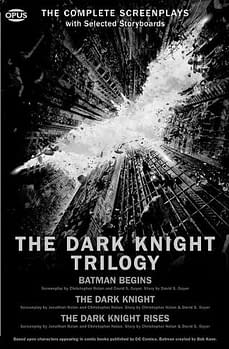
Whilst not a comic, this script-book from Opus Books covering all three Christopher Nolan Batman movies is the kind of thing that readers of this column will probably find well worth checking out. Running to almost 600 pages, this chunky paperback reprints the entire scripts from all three films, as well as an interview with Nolan and screenwriter David Goyer, and selected storyboard sequences from the three movies.
The opening interview is fairly candid, and sheds some interesting light on Nolan's working methods: most notably, it gives details on how each movie was conceived from scratch (rather than setting out to make a trilogy from the start) and how the villains of the movies were chosen to fit the stories Nolan wanted to tell (rather than the other way around). There's also plenty of discussion of how Nolan views Bruce Wayne as a character, and on how he (literally) dreamed up the ending of The Dark Knight Rises.
From there, we're straight into the scripts, each of which is followed by a few pages of storyboards from the movie. You'll probably already know whether you're the kind of person who likes to read movie scripts or not: personally, I find it very interesting to read elements like stage directions and scene descriptions, as well as little snippets of dialogue that didn't make it to the screen. And if nothing else, having the script for The Dark Knight Rises in your hands means that there's no excuse for misunderstanding Bane's dialogue!
Finally, to the storyboard sequences themselves: whilst the first excerpt isn't the most exciting you could think of–showing the opening well-falling sequence from Batman Begins–the second and third more than make up for it. These show the entire storyboards from the truck chase sequence in The Dark Knight (complete with a far more traditionally-drawn Joker, which just looks odd in Nolan's Bat-universe, especially now that we've seen Heath Ledger's version), and the plane-hijack opening scene from The Dark Knight Rises.
As ever with storyboards, reading these extracts just leaves me hungry to see the whole thing (especially some of the more action-oriented stuff from Begins), but I guess there's no book big enough to hold all of that.
Whilst essentially a glorified script-book (make no mistake, the scripts make up the vast majority of the page-count) this is a decent package that stands as a definitive record of the trilogy and also throws in some decent extras to boot. Available at just a shade over a tenner for UK readers (and slightly more for those in the US), this is pretty good value for money for those who just can't get enough of Nolan's Dark Knight.
Just a quick mention for this reprint edition, as the original version of this book has been available for many years now (albeit at silly prices once the book went out-of-print). Marvel deserves praise not only for reprinting one of the most sought-after of its out-of-print Omnibuses, but in giving it a reprint that's actually superior to the original.
As well as collecting Grant Morrison's fantastic run of X-Men comics, the book contains many pages of extras that weren't available in the TPBs (and some of which didn't even make it into the three separate oversized hardcover collections), making it the definitive collection of what I think is one of the best X-Men runs of all time.
But we already know all that. It's the printing and binding quality of this volume that really sets it apart from the earlier release of the same material. I don't know if printing techniques have improved a lot since the first version of this book came out in 2006, but this reprint lies a lot flatter than the original, meaning there's far less of the kind of missing art and dialogue that got lost down the central crease in the original printing. In fact, you could open this book at any point and the two pages would lay as flat as a central double-page spread in a floppy single issue. That's how good this is.
To help differentiate between the two versions, Marvel have (unusually) given this reprint a completely new cover. The new version is the one pictured, whilst the old version sports the cover of New X-Men #114. If you have the choice, I'd definitely go for the new one.
Harker: The Book of Solomon HC
As you may have gathered from my earlier comments, Harker is a book that I'm very pleased to see get a fancy hardcover printing from Titan. I've been following it ever since it was a little-known indie book from Ariel Press, and having supported it in singles (as well as the original TPB printing), I feel a certain amount of pride in seeing it reach a wider audience like this.
A British detective/whodunnit thriller with supernatural and occult undertones, this opening 6-issue arc sees DCI Harker and DS Critchley investigate a series of suburban murders linked to a mysterious magical 'grimoire'. However, there's also a rich vein of humour that runs throughout the series, with writer Roger Gibson playing off all sorts of TV-show murder-mystery stereotypes but gently subverting them through his characters' awareness of them.
It's also refreshing to see a comic that's so resolutely British (how many other books feature an entire series of full-splashpages that detail nothing more than a conversation between two blokes in a pub?) without being so consciously defined by that trait that it risks alienating non-native readers.
Finally, Vincent Danks' black-and-white artwork really helps to convey the story effectively, with a great handle on facial expressions that would appear to utilise photo-reference fairly extensively, but without ever using it as a crutch. The same is true of some of the wonderful shots of vehicles or architecture that are included in the book: always looking virtually photo-realistic, but without sacrificing the looseness of Danks' style.
If you're interested in reading something that's a little different from your usual habit and want to take a chance and support an indie book by two up-and-coming creators, then you could definitely do a lot worse than pick up this neat little hardcover collection.
To Be Continued…
Next time, I plan to try and put together an essential list of Batman-based collected editions. I have a pretty good idea of what I want to include, but if you have any suggestions of underrated or overlooked gems, then stick them in the thread below!



